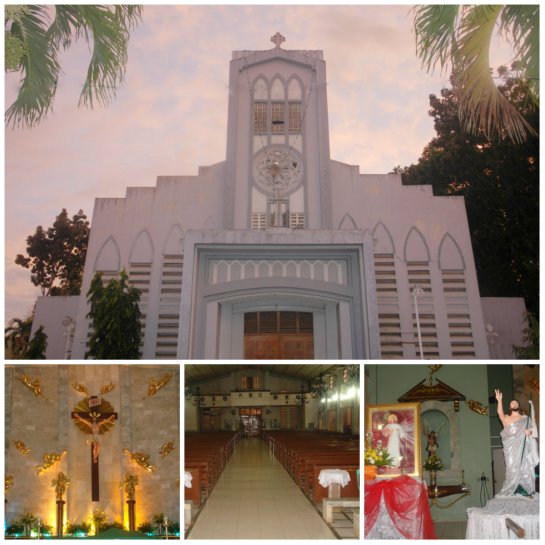Parish Priest: Rev. Fr. Alfredo Malalis
Asst. Parish Priest: Rev. Fr. Rolly Lagada
The Religious Picture of Tangub a Century Ago
The organized Christian origins of Tangub apparently stems from a policy decision made around the year 1886 by the Government in Manila (then under the Spanish Government) to open a pathway to link up the two Bays (Pangil, then called Mipangil, and Yllana). The purpose of this decision was to facilitate commerce and postal communications between the two district capitals: Zamboanga (Capital of Zamboanga District) and Cagayan (Capital of Misamis District). The Governor General of the Philippines was Don Emilio Terrero and the Politico-Military General of the Misamis District was Don Luis Huertas y Urrutia. The idea was to secure a road through the forest surrounded by Muslims (called Moros then) from a starting point in Pangil Bay to Tukuran in Yllana Bay.
To put into effect this policy, the Maria Cristina Mission was founded on December 9, 1886, located originally in Maranding. The plan was to make an exploratory expedition to Tukuran from this Mission. It was originally composed of about 1,000 settlers proceeding mostly from Bohol and different parts of the District of Misamis. Various Recollect Missionaries were assigned to accompany the settlers. But many soon left the mission because of conditions unfavorable to health.
At the time of the Recollect Missionary Father Buenaventura Marrodán it was decided to transfer the Mission to a more propitious place. Hence, after a very serious study of conditions, it was agreed to choose the Asitio llamado Tangob@ (the place called Tangob), where there was already a small aggrupation of Christians. The Mission was transferred here in 1888, with Father Marrodán who chose the most decent house for himself. Actually it was nothing more than a large hut.
Having obtained the necessary permissions from his superiors, Father Marrodán immediately started to build a Convento, using his own funds and overcoming great difficulties because of lack of workers and carpenters. He was able to build one with a wall of pampango (tabique pampango) which at the time of this writing (1925?) can still be seen. Father Marrodan was thinking of building a provisional Church when, under obedience to his Superiors, he entrusted the Mission to Father Eugenio Sola in 1889.
In this year Captain General Weyler organized the exploratory expedition to reach Tukuran, which was the object of the Maria Cristina Mission, now located in Tangub. He was accompanied in this expedition by Father Pascual Bermejo, Parish Priest of Misamis, and Father Eugenio Sola, in charge of the Mission in Tangob, and a few companions. All in all there were 12 of them. It is supposed that Retired Seargent Domingo Resano, A an honorable man and very devoted to the Spanish Name@ who is described as always accompanying events of this kind, was with the group. This expedition was made by night and by foot through the land of Muslims, with the great danger, as usual, of being attacked by the latter, through 26 kilometers of very dense forest.
Subsequent to this exploratory expedition, a corps of Engineers was sent from Manila and housed in the Misamis Convento. Their mission was to build three forts which would tie up the military camp to be built in Tukuran with Misamis. This corps was composed of a Lieutenant Colonel, a Commandant of Engineers, a Captain of the same, and other officers of the Company of Engineers and Military Police.
It is to be surmised that this group settled in Tangub to start their work. But since there is no more mention of them, it is supposed that their work was overtaken by the Philippine Revolution and the subsequent overthrow of the Spanish Government.
It is interesting to note that Tangub is still the crossroads between different economic and political centers in the area. One only needs to look at a map to see this. And in fulfillment of this its historical destiny, the Church was and is there to help and guide it.
Archbishop Jesus Dosado, C.M.

